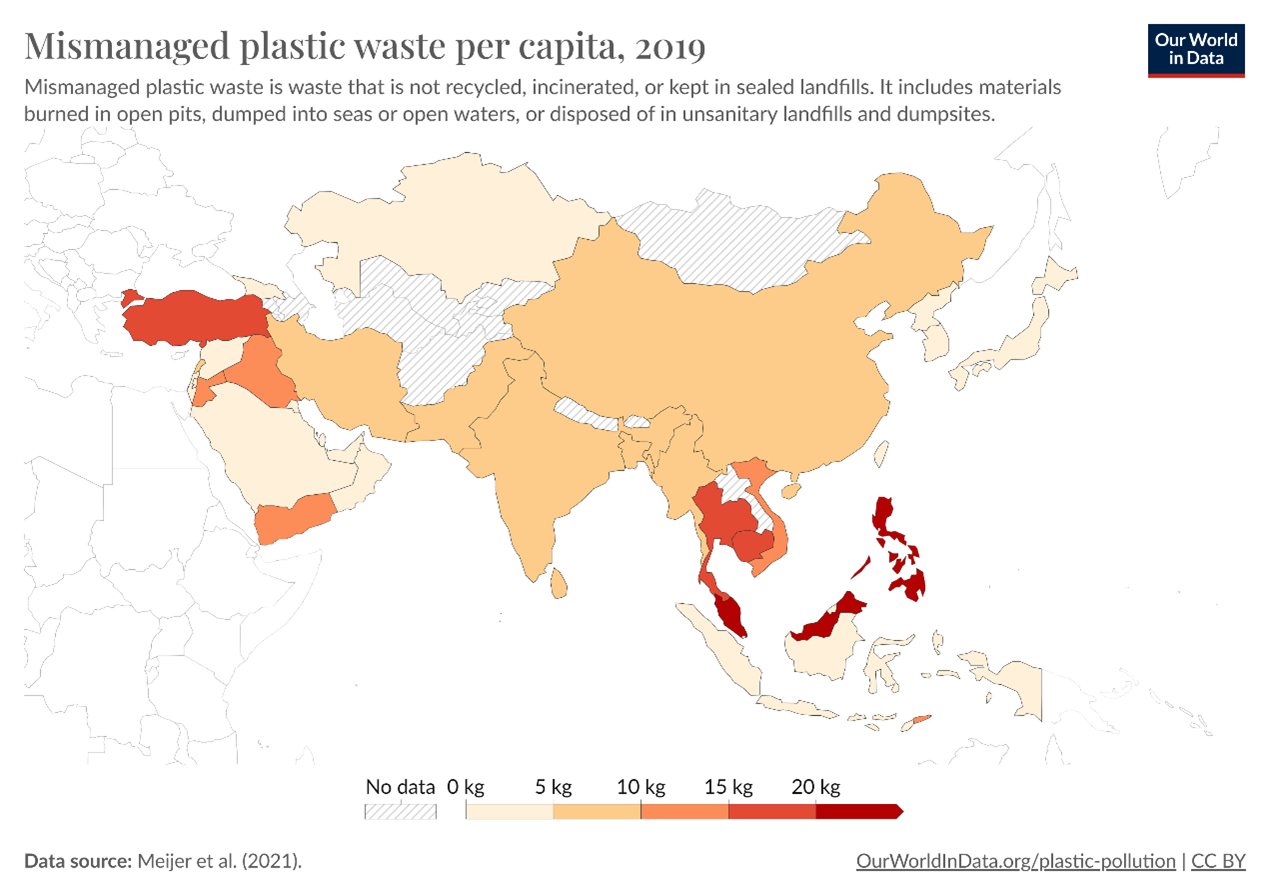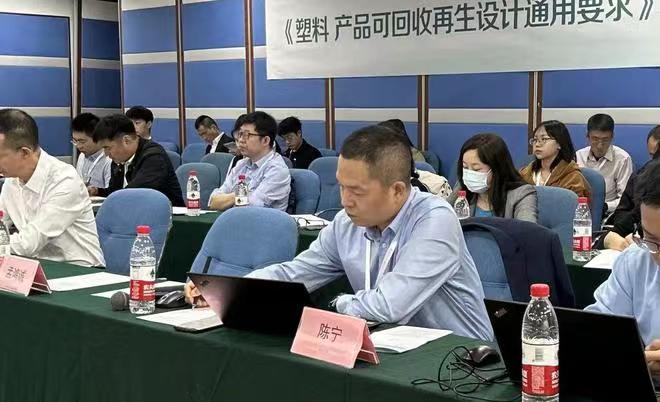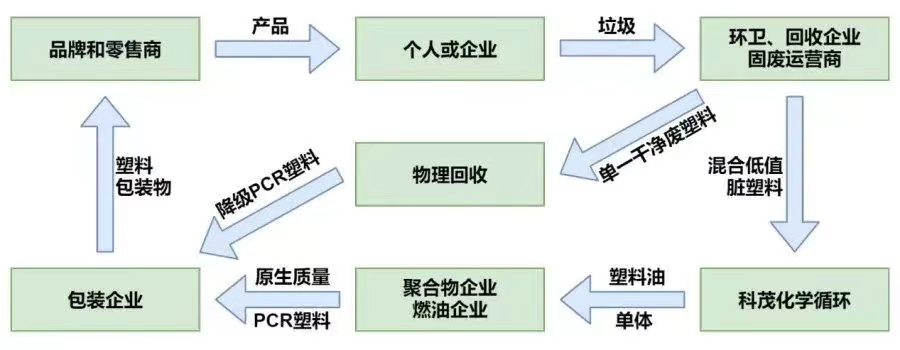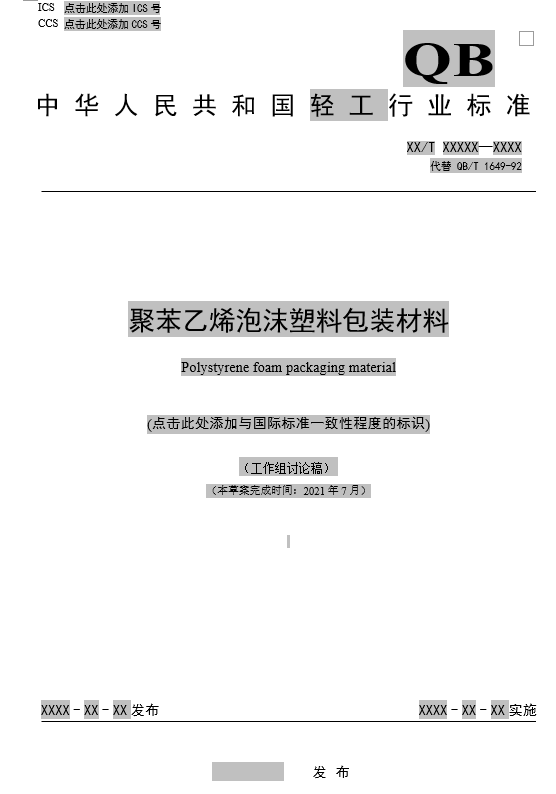Plastic Pollution in the Philippines
A growing middle class, increased consumer demand and a strong economic boom have spurred the Philippines’ economy in recent decades. This growth, positive in so many ways, has inadvertently fed a plastic pollution crisis. In the Philippines, the plastics industry is not only vital to the national economy (contributing US$2.3 billion in 2018), but plastics also provide low-cost consumer goods to poor and middle-income families. However, a high dependence on single-use plastics like multilayer sachets and pouches has led the Philippines to become a “sachet economy” that continues to worsen the alarming levels of marine plastic pollution in the region. By some estimates, the Philippines consumes a staggering 163 million pieces of sachets every day. At the same time, the Philippines is mismanaging plastic waste. A staggering 2.7 million tons of plastic waste are generated in the Philippines each year, and an estimated 20 percent ends up in the ocean. Comprised of more than 7,500 islands, the livelihoods of the Philippines’ coastal communities, and the fishing, shipping and tourism industries are especially vulnerable to the impacts of marine debris.


Chinese Solution to Plastic Pollution in Philippines
-
Background
A large amount of plastic waste brings a heavy environmental burden to the Philippines. In recent years, the Philippines has stepped up efforts to deal with the waste and pollution of plastic products. Chinese experience in recycling waste plastics will provide some reference for Philippine plastic pollution control.

-
Chinese Experience in Plastic Recycling
China has accumulated rich experience in plastic recycling, and through a series of policies and measures, it has effectively promoted the recycling of plastic waste. Specific experiences include:

- Establish a sound recycling system: China has established a recycling system covering both urban and rural areas, including fixed-point recycling, recycling stations and recycling vehicles, which has realized the classification, collection and recycling of wastes.
- Policy support and economic incentives: China has issued a series of policies and regulations to encourage enterprises and individuals to participate in waste recycling, including providing economic incentives, reducing taxes and subsidies.
- Technological innovation and R&D investment: China has increased R&D investment in plastic recycling technology, promoted the application and popularization of new technologies, and improved the efficiency and quality of waste recycling.
-
Practice of Controlling Plastic Pollution Learning from China in the Philippines
Regarding the recycling of waste plastics, the Philippines can learn from the following management experience of China:
First, advocate green consumption and improve public civilization. The public is the main consumer group of soft plastic products. It is suggested to go deep into the community to carry out residents' education activities, reduce unnecessary plastic consumption and encourage consumers to adopt environmentally friendly substitutes. At the same time, educate and guide the public to develop the correct habit of collecting and putting low-value recyclable materials by formulating nationally recognized signs.
The second is to improve the recycling system and realize the collection of waste plastics. Perfect terminal collection and disposal infrastructure of plastic waste is the key to prevent and control plastic pollution. It is suggested to further refine the current garbage classification system, add low-value recyclable materials classification and collection devices, and increase the infrastructure for recycling and disposal of plastic waste in cities, and improve the recycling system from plastic production to terminal disposal. Encourage pilot innovation in the industry, and the government should consider giving corresponding policies and financial support to the pilot projects that the industry spontaneously aims at improving the construction of soft plastic recycling system.
The third is to formulate industry standards and advocate the design of plastic products that are easy to recycle. The single material of plastic products can greatly improve the utilization value of plastic recycled products, thus gaining market recognition. It is suggested that the recyclability and recyclability should be fully considered from the beginning of the design of the front end of flexible packaging products, so as to facilitate the recycling and reuse of the end, thus improving the recycling rate and high-value utilization rate of plastic flexible packaging
The fourth is to build a recycling system of soft plastics and explore the business operation mode. It is suggested to strengthen the technological research and innovation of soft plastics recycling, promote the linkage of all links in the recycling industry chain, and select pilot cities to promote the construction of recycling system, so as to explore a reproducible and scalable market-oriented business model suitable for the recycling of low-value waste plastics in China.
Related Links:
- 【200秒了解中国的限塑之路-哔哩哔哩】 https://b23.tv/3QyMTlC
- 塑料换米https://haokan.baidu.com/v?vid=874888237293493710&pd=bjh&fr=bjhauthor&type=video&source=1030865f-0-1029429w
- 菲律宾塑料危机https://m.baidu.com/video/page?pd=video_page&nid=977658755342792756&sign=11817197019044425148&word=%E8%8F%B2%E5%BE%8B%E5%AE%BE%E5%A1%91%E6%96%99%E6%B1%A1%E6%9F%93&oword=%E8%8F%B2%E5%BE%8B%E5%AE%BE%E5%A1%91%E6%96%99%E6%B1%A1%E6%9F%93&atn=index&frsrcid=4185&ext=%7B%22jsy%22%3A1%7D&top=%7B%22sfhs%22%3A1%2C%22_hold%22%3A2%7D&sl=2&fr0=B&fr1=B&ms=1&lid=10118395698531456112&_t=1701165122452
- 菲律宾塑料循环利用https://haokan.baidu.com/v?pd=wisenatural&vid=6854364374309151807